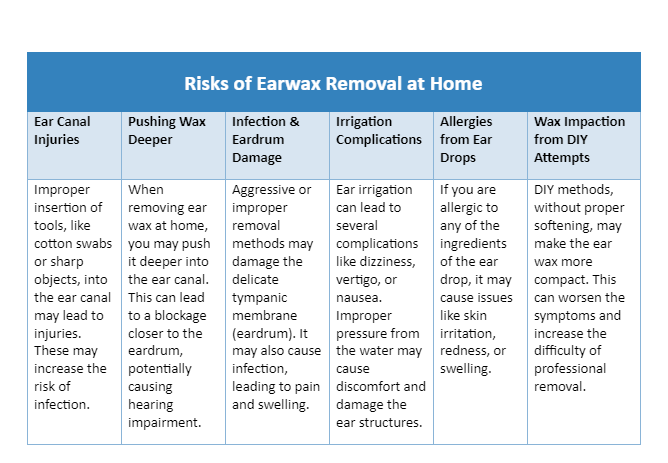
Cerumen is the clinical term for ear wax. It is a natural substance produced by the glands in the ear canal. The combination of dead skin cells, hair, and secretions makes this substance. Even though the composition seems gross, ear wax is crucial to maintaining ear health. However, excessive accumulation of earwax can lead to various issues such as hearing loss, discomfort, and even ear infections.
Synopsis
What is Ear Wax & Does It Need Removal?
Ear wax is a sticky composition of the secretions from the sebaceous glands of the ear canal, ceruminous glands, and dead skin cells. It provides a protective layer in the ear canal.
The normal functions of ear wax include:
-
A natural filter that traps dust, bacteria, and other foreign particles, protecting the inner ear.
-
Moisturization of the ear canal.
-
Prevention of dryness and discomfort
-
Prevention of infections within the ear canal due to its antibacterial properties
Ear wax usually gets out of the ears on its own. But sometimes removing it by yourself becomes necessary. Certain situations require external removal procedures, including:
-
Excessive ear wax buildup, disrupting natural migration and also causing blockage
-
Accumulates near the ear drum, causing hearing impairment
-
When ear wax causes discomfort and pain in the ears.
-
When your ears feel full
-
Ear wax may impact the performance of hearing aids, obstructing the sound pathway
-
The size of children’s ears is very small, which requires precision and expert hands to avoid any injury
-
Older adults also require professional services due to the composition and consistency of this substance change with age
-
Choric ear conditions, like recurring infections or a history of perforated ear drums
Safe Ear Wax Removal Methods
There are several ear wax removal procedures available. Let us discuss the safest ones among them below:
Practise Ear Hygiene
To maintain your ear health and manage the condition safely at home, clean your outer ear regularly with a washcloth while bathing to prevent wax from accumulating. Don’t insert cotton swabs or other objects into the ear canal. This can push wax deeper and increase risk factors. Be cautious if you are using ear candles. Use ear protection, such as earplugs, when swimming or in noisy environments. It prevents foreign particles from entering the ear.
Professional Ear Wax Removal
Seek the expertise of a professional, such as an ear, nose, and throat (ENT) specialist. They use specialised tools like curettes or forceps for safe and effective removal. Their precise skills ensure that the delicate ear structures do not get injured.
Ear Drops
Over-the-counter ear drops or drops prescribed by a doctor can soften ear wax. This method makes it easier for the wax to exit the ear canal naturally. This is a gentle approach suitable for mild cases. Follow the instructions provided with the drops or by your doctor.
Warm Water Rinse
This method requires rinsing the ear with warm water using a bulb syringe or a specialised ear irrigation kit. Commonly recommended for home use, it should be done with caution to avoid injury.
Olive Oil or Mineral Oil
A few drops into the ear can soften ear wax. This aids in natural removal. While applying warm olive oil to the ear, lie on your side for a few minutes to allow the oil to penetrate before draining.
Microsuction
In this technique, the medical professional uses a suction device to remove ear wax without the use of water. It is particularly effective where irrigation is not recommended.
Consult our ENT Hospital in Whitefield if you want to know more about the best way to remove ear wax.
Is Earwax Removal at Home Risky?
Yes, there are certain risk factors for ear wax removal at home, especially when using home remedies. Here are some risks involved when we use home remedies for earwax removal.

Specific individuals, like older adults or people with diabetes, may have fragile or compromised skin. Such situations increase the risk of injury during removal procedures.
Take note of your symptoms and identify when it is getting uncomfortable for you. Note that, seeking professional support from an ENT specialist will help you avoid further complications.
Visit the best ENT consultants at Manipal Hospital Whitefield, Bangalore, for accurate treatment options.
FAQ's
Cotton swabs may push the wax deeper. Thus, it is best to seek professional guidance and meet an ENT specialist for earwax removal.
Yes, ear drops soften the wax. However, it is vital to follow the instructions before using them.
Ear pain, discomfort, hearing loss, and unsuccessful home remedies indicate the need for professional help.



















 5 Min Read
5 Min Read















